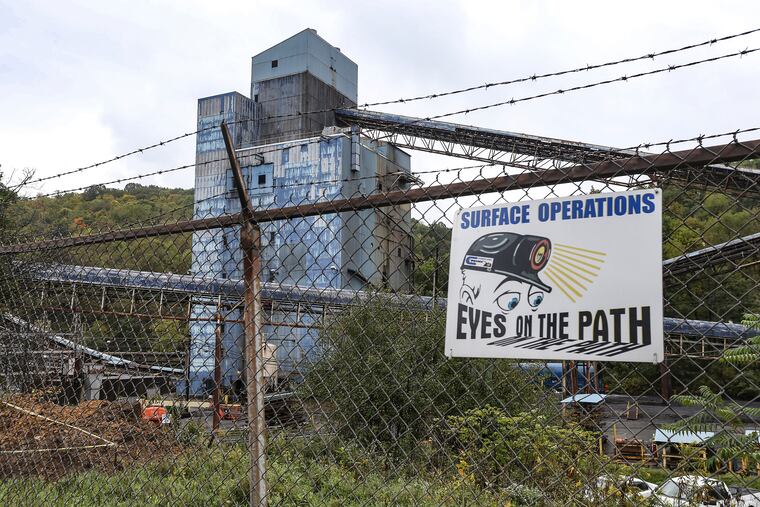I grew up in Pennsylvania coal country. It wasn’t pretty and it’s time to move on. | Opinion
Even after deep mining wound down, the environmental costs have lingered.

When I was born in the heart of anthracite coal country in the 1950s, coal mines were still operating. Their prospects today—particularly after the United Mine Workers of America union just announced their support for a transition away from coal— look different.
Coal has long had a storied history in northeastern Pennsylvania. The region grew fast and rich from the 18th to the mid-20th centuries, with anthracite (“hard”) coal noted in the area by John Jenkins, Sr. on a map in 1762. An agent of William Penn reported back to London in 1765 that coal was present, noting in an understatement that “this may sometime be a thing of great value.” Obadiah and Daniel Gore burned the curious “black rock” in their blacksmith shop in 1769, and by 1807, the first 50-ton shipment of hard coal had been floated down the Susquehanna River to Columbia, in Lancaster County. In 1808, in a tavern in Wilkes-Barre, Judge Jesse Fell demonstrated a way to kindle this “stone coal” in a simple grate without the forced draft of a bellows. Together with a Western Pennsylvania bituminous (“soft”) coal find in 1752, the Coal Age in America had begun.
» READ MORE: Schuylkill County and coal country keep Pa. politics unpredictable | Opinion
But the legacy of coal mining in that region was mixed from early on. By the late 19th century, it had financed the rapid growth of two soon-to-be bustling cities — Wilkes-Barre and Scranton — bringing industry and commerce to the Valley and attracting waves of immigrants from Wales, Germany, Poland, Ireland, and later, Italy. The earliest American members of my family arrived in 1853 and 1865, from Germany and Russia. Yet this prosperity for some in the 19th and 20th centuries was built on the backs of hard labor, available for a pittance. Once underground mining became established, miners were beset by emphysema and “black lung” diseases, and mining accidents became regular occurrences. One near Pittston in 1896 took 58 lives.
The last big mine collapse occurred in 1959: the Knox Mine Disaster under the Susquehanna River. An illegally dug and inadequately supported mine shaft and galleries under the river were created at the direction of corrupt mine bosses, including the mineworkers’ union president. These collapsed, an enormous hole opened in the riverbed, and a vortex of water inundated the mine, killing twelve miners. The hole took three days to fill — with dozens of railcars and tons of rock and mining debris. The accident marked the beginning of the end of King Coal in Northeastern Pennsylvania, and deep mining largely ended within 15 years.
There remained, however, coal mining’s environmental damage. The strip mines left extensive scars on the landscape, still unhealed in some places. There were left “mountains” of coal waste, down which we would slide — much to our mothers’ chagrin. These leached pollutants into waterways for decades. At the same time, stormwater entered the old mines through boreholes, and the toxic effluent found its way to streams and rivers stained orange from sulfuric acid and iron oxide, ravaging water quality. The Susquehanna along whose shores we played (again, to our parents’ dismay) often smelled terrible, the river regularly carrying dead fish and depositing them along the same banks where we’d find arrowheads and fossils. We would rarely see a boat, and never a fisherman. The coal used to heat our homes and businesses, while cleaner-burning than “soft” coal, still polluted the air through the long winter.
» READ MORE: Trump didn’t bring back coal in Pa. But that doesn’t mean miners are backing Biden.
The boom and bust cycle adversely affected the region’s economy for two generations after the mines closed because, crucially, there was no planning or transition created for what would come next. Fifty years later, the rivers and streams are just now recovering from the pollution that nearly killed them. They’re still bringing the coal-scarred landscapes back to life, for billions of dollars of effort.
Don’t get me wrong. As much as I can tell from afar, progress is being made in the region. New jobs outside of coal are arriving, and incomes long depressed seem to be rising, albeit slightly and slowly. There is commerce, industry, and a strong government services sector in the Valley. Modern federal and state air and water pollution laws are having some positive environmental effect.
But the coal-created economy — much as it caused a fever that burned for more than 150 years — was dirty in innumerable ways. Miners benefitted. They also suffered. The region grew, then shrank. Hard carbon came out of the earth, and the waste ended up on the land and in the water, air and, eventually, the atmosphere.
It is time for a new age leaving coal behind, in Pennsylvania and everywhere.
Lee Epstein is an environmental lawyer with four decades of practice in the public, private and non-profit sectors.